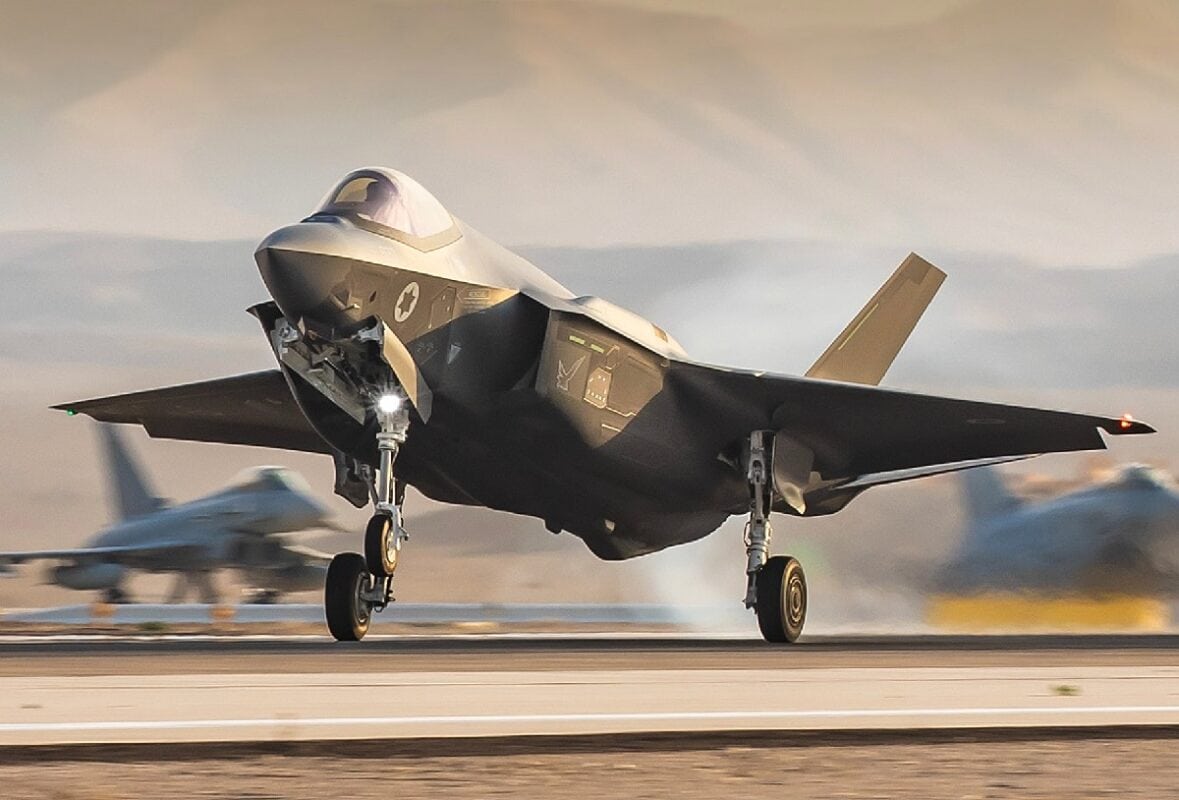Israel Takes Delivery of Three More F-35I Adir Stealth Fighters: Last week, Israeli Air Force (IAF) F-35I “Adir” jet fighters escorted a pair of United States B-52H Stratofortresses that were deployed to the skies over the Middle East as part of a “show-of-force” bomber task force mission. Should the bombers be sent again, the IAF will have even more Adirs available to provide escort.
On Sunday, three brand new F-35s were delivered by Lockheed Martin to Israel, joining the thirty-three already based in the country. The new fighter jets will join the IAF’s 140 Squadron, the Golden Eagle, and will begin taking part in operational activities in the coming weeks. Jerusalem is still on track to acquire an additional fourteen F-35s by the end of next year, bringing the total fleet of the fifth-generation stealth aircraft to fifty.
F-35I: First Foreign Operator
Israel was the first foreign operator of the Lockheed Martin F-35 Joint Strike Fighter, and the country signed a Letter of Agreement (LOA) to purchase the advanced aircraft in 2010.
On June 22, 2016, the IAF received the first F-35A Adir at a ceremony at the Fort Worth, Texas, F-35 factory. The Israeli Air Force declared its F-35 fleet operationally capable in December 2017, marking the completion of an intensive integration and training effort conducted at Nevatim Air Force Base (AFB), Israel. The Israeli Air Force gave the F-35 the Hebrew name Adir, meaning “Mighty One” in Hebrew.
Worldwide, some 860 F-35 aircraft have been delivered and entered service, accumulating more than 590,000 flight hours. The jets currently operate globally from 36 locations and aircraft carriers, and are in service with nine different countries, while half a dozen more partner nations will be operating the fighter by the end of the decade.
The F-35I Adir – Mighty Indeed
The IAF is unique in that it also operates a special variant that was developed to address concerns that the F-35’s stealth capabilities could be partly overcome within a decade despite the thirty- to forty-year service life of the aircraft. Israel sought to utilize its own electronic warfare system (EWS), and while the U.S. had initially refused to allow such changes, it was eventually agreed that the IAF could integrate its own EWS, including sensors and countermeasures, on top of the U.S. systems.
In addition, IAF pilots utilize a locally-developed helmet-mounted display, and bespoke datalink functionality that is specific to the IDF, while other enhancements further improved the F-35’s already-potent data gathering and processing capabilities. These various enhancements to the stealth aircraft have been significant enough to warrant the ‘I’ designation, making the F-35I one of just a handful of formally acknowledged F-35 variants.

Image: Creative Commons.

Between the dates of November 3rd until November 14th, the “BLUE FLAG” exercise took place at “Uvda” Air Force Base in Southern Israel. This exercise is the first international “Fifth Generation” exercise taking place in Israel involving the F-35 aircraft.
The Blue Flag exercise is of paramount strategic importance and will have a significant impact on the Air Force, the IDF and the State of Israel as a whole. The exercise will include over a thousand air crew, technical and administrative personnel from different air forces.
IAF Photo by: Amit Agronov
Two IAF squadrons are equipped with the aircraft, including the 116th Lions of the South Squadron and the 140th Golden Eagle Squadron based at Nevatim Airbase. The IAF also has a third squadron used for training.
A Senior Editor for 19FortyFive, Peter Suciu is a Michigan-based writer. He has contributed to more than four dozen magazines, newspapers, and websites with over 3,000 published pieces over a twenty-year career in journalism. He regularly writes about military hardware, firearms history, cybersecurity, and international affairs. Peter is also a Contributing Writer for Forbes and Clearance Jobs. You can follow him on Twitter: @PeterSuciu.

